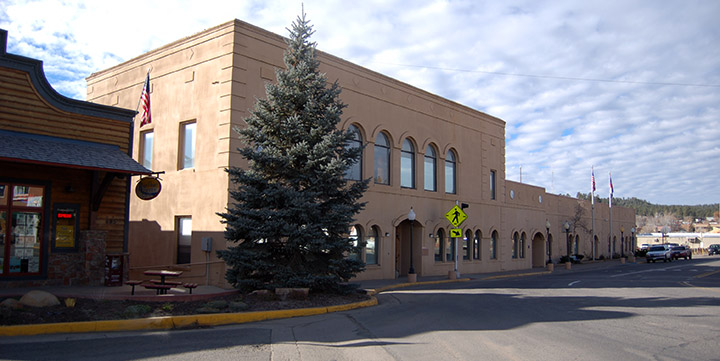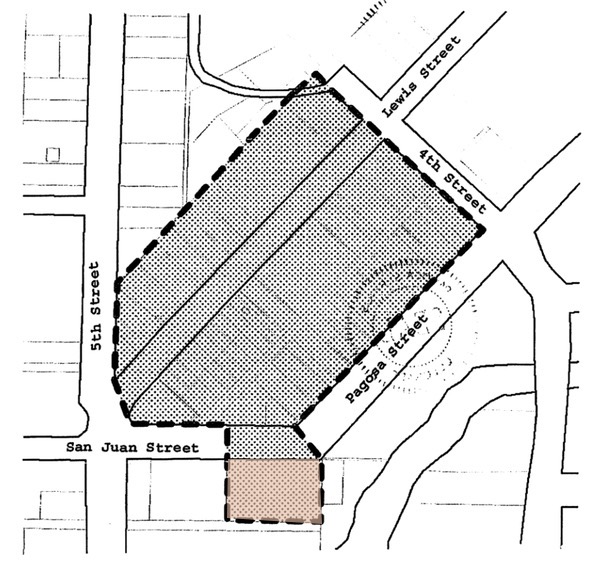Had coffee with a friend last Saturday — a conversation that centered mainly around “successful” Pagosa Springs businesses, and what factors made them successful — and the dialogue took a brief detour to touch on our respective health issues, such as they are.
My friend wrapped up the topic.
“Getting old… is not for the timid.”
I had expected the slightly more famous version, “Getting old… is not for sissies,” but perhaps that version is no longer politically correct due to its gender connotations.
Of course, getting old can also be compared to the alternative.
And we will note that towns get old as well, although not in the same way people do. I’m referring here to way physical structures and infrastructure get old, and sometimes rundown due to lack of maintenance, or due to careless construction practices on the front end.
Not all buildings fail due to age. In fact, I would suggest that very few buildings fail due simply to age. Buildings fail because people neglect them. Buildings can be preserved when people preserve them.
This photo shows one of the oldest buildings in North America, located in Taos Pueblo — built prior to 1500 AD. The building is still in use.

About 20 years ago, a relatively new government advisory board, the Pagosa Springs Historic Preservation Board, began designating historically significant properties within the Town limits. I don’t specifically recall the creation of this advisory board — I wasn’t paying much attention to historic preservation back in 1999 — but according to Town records, the creation of the Historic Preservation Board happened in the midst of a community emergency.
Ordinance 518 (Series 1999) was written as an “Emergency Ordinance” — meaning that the Town Council had determined that its adoption was “necessary for the immediate preservation of the public health and safety of the residents and visitors of the Town.”
The ordinance was passed by a vote of 4-0 at a special meeting on March 26, 1999, and designated the Town Council as the Town’s Historic Preservation Board. The ordinance was signed by then-mayor Ross Aragon.
At that same special meeting, on March 26, 1999, the Town Council also approved Ordinance 519 designating the “Old Pagosa Springs Water Treatment Plant” — the home of the Upper San Juan Historical Society Museum — as “a historic landmark” based on its historical importance, being “associated with events that have made a significant contribution to the history of the Town of Pagosa Springs.”
This ordinance was also written as an “Emergency Ordinance” — “necessary for the immediate preservation of the public health and safety of the residents and visitors of the Town.”
Back in those days, as I understand it, the Town Council made regular use of the “Emergency Ordinance” rule… which allows an ordinance to be passed without any public notice and without a second reading… even when there was no authentic emergency. Merely for convenience.
I can only guess at the Council’s motivation for suddenly creating an Historic Preservation Board on March 26, 1999 and just as suddenly designating the Museum as the Town’s first historic landmark. I am guessing that the state or federal government was offering some type of historic preservation grant and the deadline for applications was drawing quickly near.
But maybe it really was an emergency? Necessary for the preservation of public health and safety?
20 years later, the Museum is still operating in that same location during the summer months, and provides free admission. You can learn more at their website.
Over the next few years, several additional downtown properties were designated as “historic landmarks” due to unique architectural characteristics or as places where important historical events may have taken place.
As many of our readers know, the Town Historic Preservation Board continues to monitor the development of our community, with an eye to preserving buildings of historic importance. I mention this fact because a Daily Post reader wrote me the other day, in a private email, to comment on last week’s decision by the Pagosa Springs Town Council to create yet another tax-funded government entity: the new Urban Renewal Authority.
This reader suggested that an urban renewal authority, with its special tax-incentive powers, might be the perfect vehicle for funding the demolition of our problematic and mostly vacant Archuleta County Courthouse, located at the sharp bend in Highway 160 where Pagosa Street meets San Juan Street — pretty much in the very center of our historic downtown.
This building, with its cornerstone claiming “1928” as the date it began its use as the Archuleta County Court House, has been consistently denigrated by our current Board of County Commissioners as a worthless structure suitable only for being scraped.

In 2004, the Town Council approved Ordinance 633, creating the Historic Preservation Overlay District which included the central business district… and the Archuleta County Courthouse. It looked like the Town was making a serious effort at keeping the “historic downtown” looking somewhat “historic.” The explanations offered for this preservation effort often made reference to the delight felt by tourists when they come upon old, well-kept buildings in a quaint Colorado resort community.
In 2004, the Town Council seemed to feel that a building dating from 1928 and still in use, had some kind of historical value and perhaps ought to be preserved.

Then in 2007, something curious took place.
The Town Council approved Ordinance 689, which excluded the Archuleta County Courthouse — and only the Archuleta County Courthouse — from the “Historic Business District.”
Which now meant that a person purchasing the Courthouse could demolish it without too much red tape.
